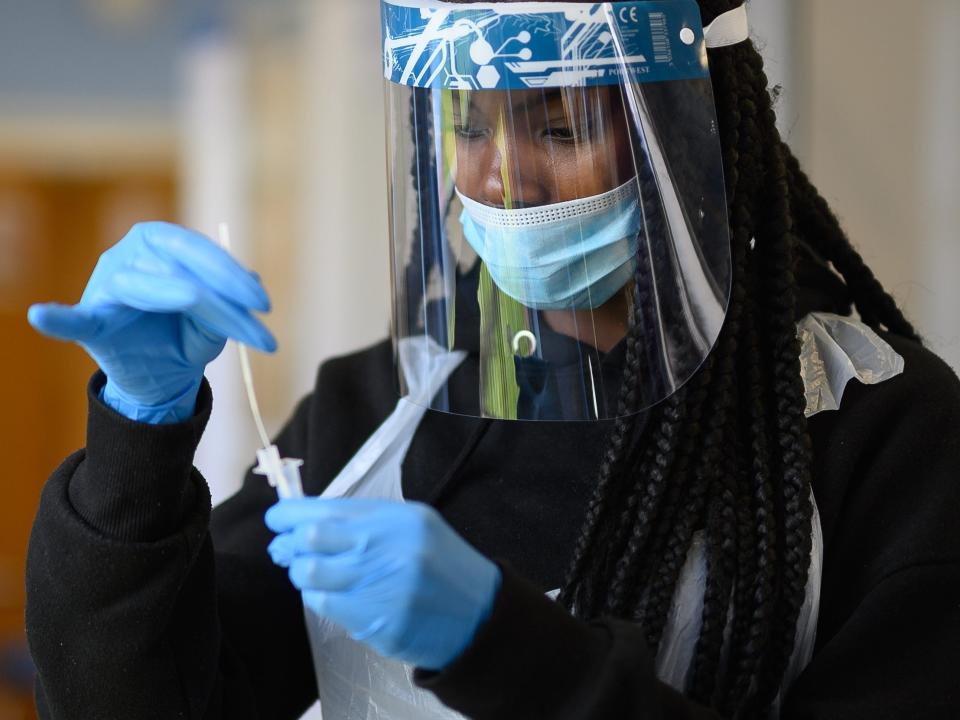Scientists are closely watching an Omicron subtype spreading in Denmark, the UK, Singapore, and India

Scientists worldwide are closely tracking an Omicron subtype called BA.2.
In Denmark, BA.2 is surpassing the BA.1 subtype, the most common cause of new COVID-19 cases.
It's not yet clear whether BA.2 is more severe or contagious than BA.1.
Health officials and scientists worldwide are closely watching a subtype of the highly infectious Omicron coronavirus variant.
The new subtype, called BA.2, is a sister of BA.1, the virus driving COVID-19 cases worldwide.
Scientists have found that the number of people infected with BA.2 has steadily increased in several countries including India, the UK, Sweden, and Singapore. It was first detected in the Philippines in December.
Experts have said this could signal that BA.2 is more infectious than BA.1, though there isn't enough data yet to determine any meaningful difference between the two.
Scientists worldwide are now scrambling to work out whether existing vaccines will still work on the subtype and whether BA.2 is deadlier.
Health officials in Denmark said on Thursday that BA.2 was displacing BA.1 and accounted for almost half of new infections in the country. They said early data suggested there hadn't been an uptick in hospitalizations since the subtype took hold.
Dr. Tom Peacock, a researcher at Imperial College London who was one of the first to sound the alarm about Omicron in November, said on Twitter on Friday that he thought BA.2 probably wouldn't cause a second Omicron wave. "Think likely scenario is BA.2 just exacerbates what the national Omicron situation is (slows down decreases, increases peaks, etc)," he said.
Peacock told the Financial Times that the subtype was not a "major cause of concern" but that it was "definitely worth keeping an eye on."
BA.1. and BA.2 share mutations, but about 50 differ between them, Peacock said on Sunday.
Francois Balloux, the director of the University College London Genetics Institute, said in a statement to the Science Media Center on Monday that the two Omicron sublineages were sisters that split from each other several months ago and were not derived from each other.
Scientists have said BA.2. is a bit harder to track in lab tests than BA.1 because of mutations in the part of the virus that attaches to cells.
According to Scripps Research's Outbreak.info, as of Monday the BA.2 Omicron subtype had been detected in 10,811 sequenced samples from 49 countries and 17 US states. Outbreak.info pulls data from a well-regarded central database called the Global Initiative on Sharing Avian Influenza Data, or GISAID.
Countries with more than 100 sequenced BA.2 samples were Denmark (8,357), India (711), the UK (607), Sweden (224), and Singapore (203). But BA.2 as a percentage of sequenced samples overall remains low — for example, BA.2 accounted for about 0.03% of samples sequenced in the UK, according to Outbreak.info.
UK health officials labeled BA.2 a "variant under investigation" on Friday. This essentially means UK officials are concerned about its mutations but haven't determined whether the subtype is deadlier, more infectious, or better able to evade vaccines.
The UK Health Security Agency said on Friday that the decision was based on "a small but increasing number of BA.2 cases" in the country and its spread internationally. "There is still uncertainty around the significance of the changes to the viral genome, and further analyses will now be undertaken," it said.
Dr. Meera Chand, the agency's COVID-19 incident director, said that "it is the nature of viruses to evolve and mutate, so it's to be expected that we will continue to see new variants emerge as the pandemic goes on."
Read the original article on Business Insider

 Yahoo News
Yahoo News 